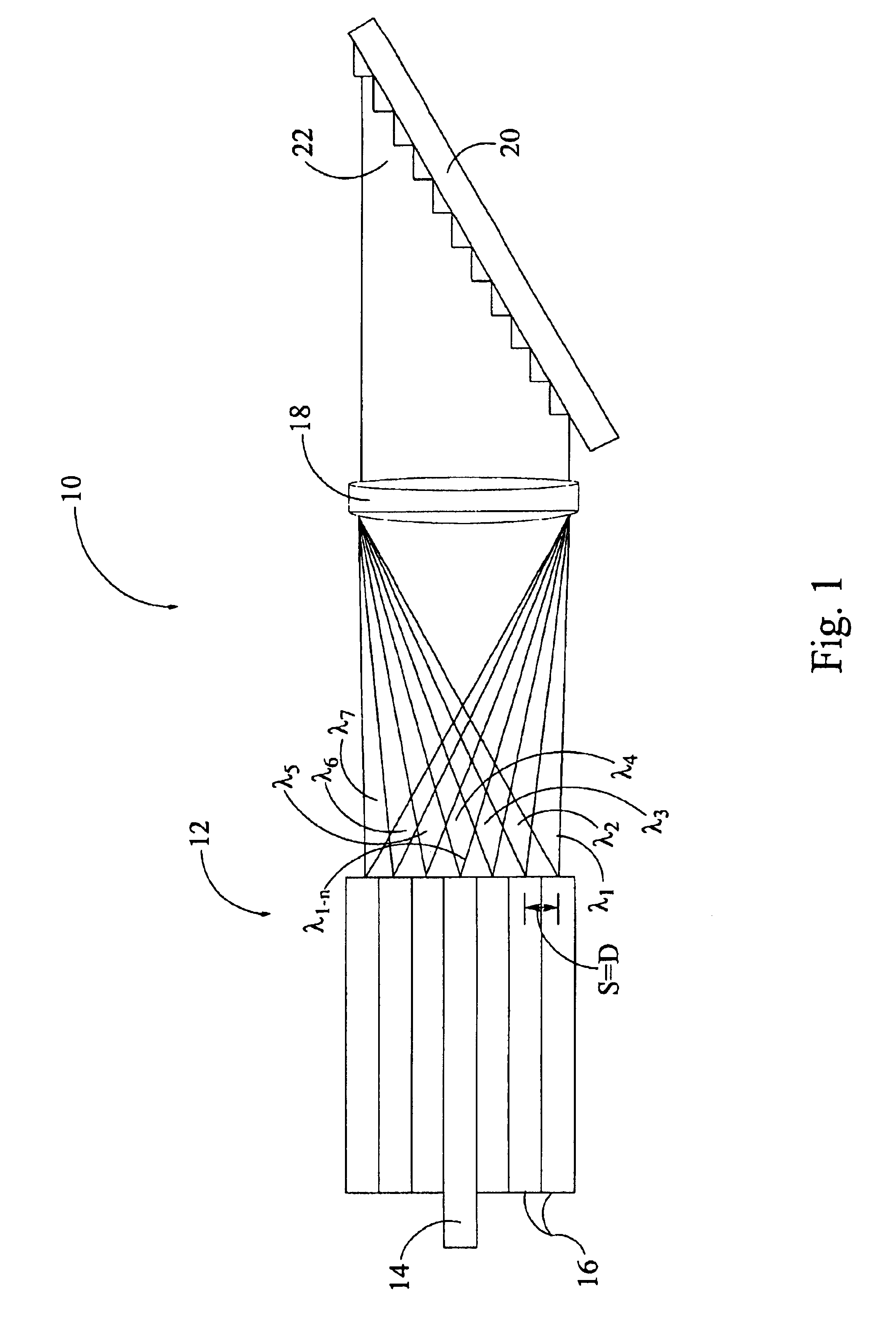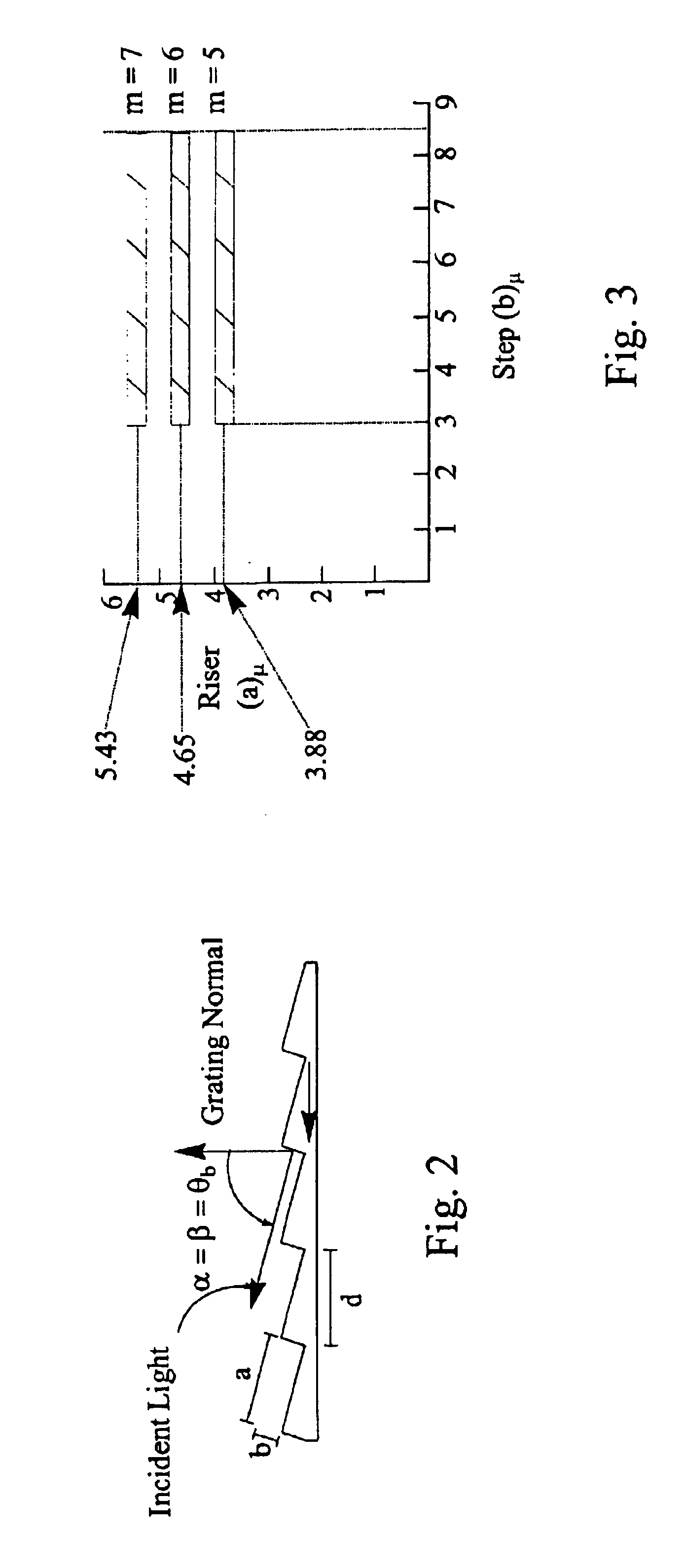Echelle grating dense wavelength division multiplexer/demultiplexer
a technology of dense wavelength division and echelle grating, applied in the field of optical communication, can solve the problems of ineffective burying of additional fibers, rapid consumption of data transmission capacity, and exponential growth of data transmission volume of optical fibers
- Summary
- Abstract
- Description
- Claims
- Application Information
AI Technical Summary
Benefits of technology
Problems solved by technology
Method used
Image
Examples
embodiment 60
[0138]A second alternate embodiment 60 is illustrated in FIG. 8 which is a schematic representation of an echelle grating multiplexer / demultiplexer using a prism in combination with front surface optical mirrors. In this embodiment, light from a single mode input fiber 62 is directed off a collimating / focusing mirror 64 and the collimated beam 66 is directed through prism 68. The prism 68 provides for wavelength dispersion in a horizontal direction as indicated by the beams 70. These horizontally dispersed beams 70 are directed off the echelle grating 72 which in turn diffracts the beams 70 in an orthogonal dimension and directs these diffracted beams off the front surface of the concave collimating / focusing mirror 74. A two dimensional output fiber array 76 receives the focused beams from the collimating / focusing mirror 74. The use of the prism 68 in combination with the echelle grating 72 provides a two dimensional array of wavelength dispersion and may therefore facilitate detect...
embodiment 100
[0140]FIG. 10 is a fourth alternate embodiment 100 using an off-axis parabolic mirror as the collimating / focusing optic. In this embodiment, multiplexed light from the input fiber 102 is directed off the front surface of an off-axis parabolic mirror 104 which in turn directs a collimated beam of light 106 off the surface of an echelle grating 108. The multiplexed light is reflected off the surface of the echelle grating 108 back to the surface of the off-axis parabolic mirror 104 and dispersed to respective output fibers 106. In this embodiment, the echelle grating is in near-littrow configuration, thereby directing light back to the output fibers 106.
[0141]A fifth alternate embodiment illustrated in FIG. 11 uses a concave echelle grating 107 configured to be the optic which collimates and focuses the incoming beam. This embodiment eliminates the need for the collimating / focusing lenses or concave mirrors of alternate embodiments one-four.
[0142]Various modifications can be provided ...
PUM
 Login to View More
Login to View More Abstract
Description
Claims
Application Information
 Login to View More
Login to View More - R&D
- Intellectual Property
- Life Sciences
- Materials
- Tech Scout
- Unparalleled Data Quality
- Higher Quality Content
- 60% Fewer Hallucinations
Browse by: Latest US Patents, China's latest patents, Technical Efficacy Thesaurus, Application Domain, Technology Topic, Popular Technical Reports.
© 2025 PatSnap. All rights reserved.Legal|Privacy policy|Modern Slavery Act Transparency Statement|Sitemap|About US| Contact US: help@patsnap.com



